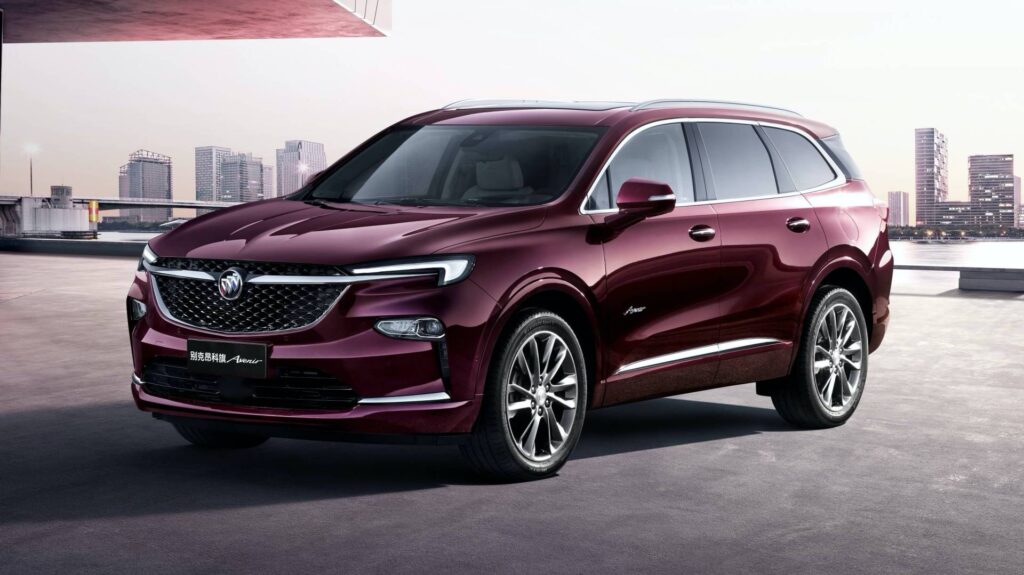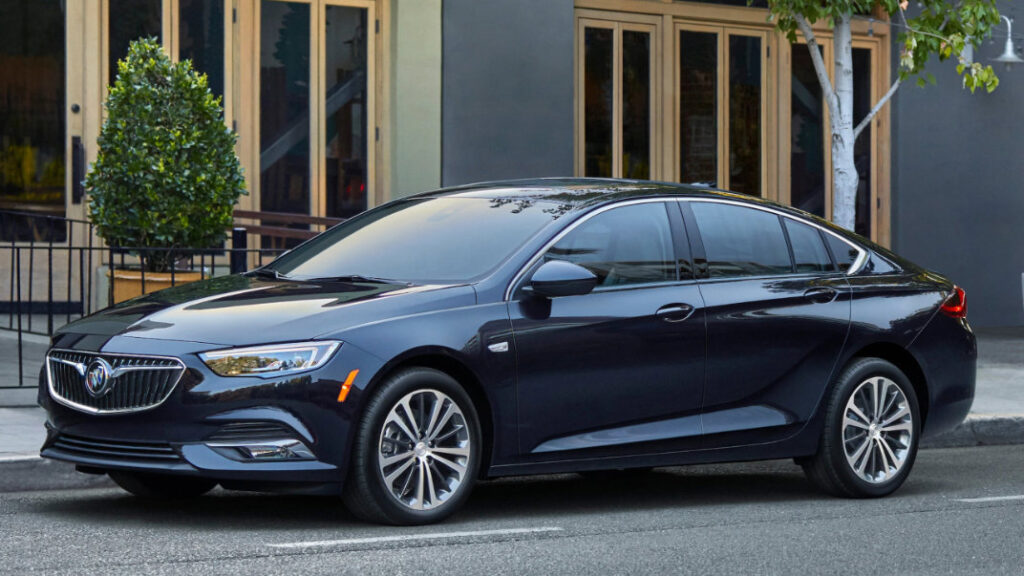If you own a Buick, you may have experienced the dread of seeing the “Check Engine” light come on. It’s an indicator that something isn’t right with your car, but it doesn’t always mean that something serious is going on. In this article, we’ll discuss the causes and solutions for a Buick check engine light.
What is the Check Engine Light?
The check engine light is part of your car’s onboard diagnostics system. When it comes on, it means that the system has detected a problem with one or more of your car’s components or systems. It’s usually a sign that your car needs attention, but it doesn’t always mean that you need to panic.
The current Buick models available:
- Encore GX – A subcompact SUV with a sporty design and advanced safety features.
- Enclave – A midsize SUV with three rows of seating and premium amenities.
- Encore – A compact SUV with a sleek design and impressive fuel efficiency.
- Regal TourX – A wagon with all-wheel drive and a spacious cargo area.
- Regal Sportback – A midsize sedan with a sleek, coupe-like design.
- LaCrosse – A full-size sedan with a luxurious interior and advanced technology features.

Common Causes of a Buick Check Engine Light
There are many potential causes of a check engine light in a Buick. Some of the most common issues include:
- Faulty Oxygen Sensor: The oxygen sensor measures the amount of oxygen in your car’s exhaust and sends that information to the engine’s computer. If the sensor is faulty, it can cause the engine to run rich or lean, which can trigger the check engine light.
- Loose Gas Cap: A loose or missing gas cap can cause your car’s fuel system to lose pressure, which can trigger the check engine light.
- Catalytic Converter Issues: The catalytic converter is responsible for reducing the amount of harmful emissions that your car produces. If it fails, it can trigger the check engine light.
- Mass Airflow Sensor Failure: The mass airflow sensor measures the amount of air that enters the engine. If it fails, it can cause the engine to run rich or lean, which can trigger the check engine light.
- Ignition Coil Failure: The ignition coil is responsible for delivering the spark that ignites the fuel in your engine. If it fails, it can cause misfires, which can trigger the check engine light.
| Buick Model | Common Causes of a Check Engine Light |
|---|---|
| Buick Enclave | Faulty oxygen sensor, loose gas cap, catalytic converter issues, mass airflow sensor failure, ignition coil failure |
| Buick Encore | Faulty oxygen sensor, loose gas cap, catalytic converter issues, mass airflow sensor failure, ignition coil failure |
| Buick LaCrosse | Faulty oxygen sensor, loose gas cap, catalytic converter issues, mass airflow sensor failure, ignition coil failure |
| Buick Regal | Faulty oxygen sensor, loose gas cap, catalytic converter issues, mass airflow sensor failure, ignition coil failure |
| Buick Verano | Faulty oxygen sensor, loose gas cap, catalytic converter issues, mass airflow sensor failure, ignition coil failure |
| Buick Cascada | Faulty oxygen sensor, loose gas cap, catalytic converter issues, mass airflow sensor failure, ignition coil failure |
It’s important to note that this table is not exhaustive and there may be other causes of a check engine light for these Buick models. If you experience a check engine light, it’s always best to consult your owner’s manual or a trusted mechanic for advice on how to address the issue.
What to Do If Your Buick’s Check Engine Light Comes On
If your Buick’s check engine light comes on, it’s important to take action. Here are the steps you should follow:
- Check Your Gas Cap: Make sure that your gas cap is tight and secure. If it’s loose or missing, tighten it or replace it.
- Check Your Oil Level: Low oil levels can cause a check engine light to come on. Make sure that your oil level is correct.
- Check Your Owner’s Manual: Your owner’s manual may have information on what to do if the check engine light comes on.
- Schedule a Service Appointment: If none of the above steps solve the issue, schedule a service appointment with your local Buick dealership or a trusted mechanic.
How to Reset the Check Engine Light in a Buick
Resetting the check engine light in a Buick is a relatively simple process. Here are the steps you can follow:
- Address the underlying issue: Before resetting the check engine light, it’s important to address the underlying issue that caused it to come on in the first place. If you haven’t done so already, consult your owner’s manual or a trusted mechanic to diagnose and repair the issue.
- Disconnect the battery: To reset the check engine light, you’ll need to disconnect the negative terminal of your car’s battery. This will reset the car’s onboard computer, including the check engine light.
- Wait: Once you’ve disconnected the battery, wait at least 15 minutes before reconnecting it. This will give the car’s computer time to reset.
- Reconnect the battery: After waiting, reconnect the negative terminal of your car’s battery. Make sure it’s tight and secure.
- Start the car: Start your car and check to see if the check engine light is still on. If it’s off, congratulations – you’ve successfully reset the light!

Alternative Methods to Reset the Check Engine Light
While disconnecting the battery is the most common method for resetting the check engine light, there are alternative methods that you can try. These methods may vary depending on the model and year of your Buick, so it’s important to consult your owner’s manual or a trusted mechanic for advice.
Using a Code Reader
A code reader is a diagnostic tool that can read and clear the codes stored in your car’s onboard computer. To use a code reader to reset the check engine light in your Buick, follow these steps:
- Plug the code reader into the OBD-II port, which is usually located under the dashboard on the driver’s side of the car.
- Turn on the car’s ignition, but don’t start the engine.
- Follow the instructions on the code reader to read and clear the codes stored in the car’s computer.
- Once the codes have been cleared, disconnect the code reader and start the car. Check to see if the check engine light is still on.
Using a Fuse
Some Buick models have a dedicated fuse for the check engine light, which can be removed to reset the light. To use this method, follow these steps:
- Locate the fuse box, which is usually located under the dashboard on the driver’s side of the car.
- Find the fuse for the check engine light, which may be labeled as “ECM” or “PCM.”
- Remove the fuse and wait at least 5 minutes.
- Reinstall the fuse and start the car. Check to see if the check engine light is still on.
How to Prevent a Buick Check Engine Light
While it’s not always possible to prevent a check engine light from coming on, there are steps you can take to reduce the risk. Here are some tips to help prevent a Buick check engine light:
- Follow Your Maintenance Schedule: Your Buick’s maintenance schedule includes important services like oil changes, filter replacements, and inspections. By following the schedule, you can catch and address issues before they turn into more serious problems.
- Use High-Quality Fuel: Using high-quality fuel can help prevent issues with your car’s fuel system, which can trigger the check engine light.
- Check Your Gas Cap: Make sure that your gas cap is tight and secure after every fill-up.
- Drive Responsibly: Aggressive driving and harsh braking can put extra stress on your car’s components, which can lead to issues that trigger the check engine light.
- Address Problems Promptly: If you notice anything unusual about the way your car is running, don’t wait to address the issue. The longer you wait, the more serious the problem can become.
Final Thoughts
A Buick check engine light can be a minor annoyance or a major headache, depending on the issue that’s causing it. By understanding the common causes and taking steps to prevent the light from coming on, you can keep your car running smoothly and avoid costly repairs. If you do experience a check engine light, remember to stay calm, follow the appropriate steps, and prioritize your safety and the safety of others on the road.
0 Comments